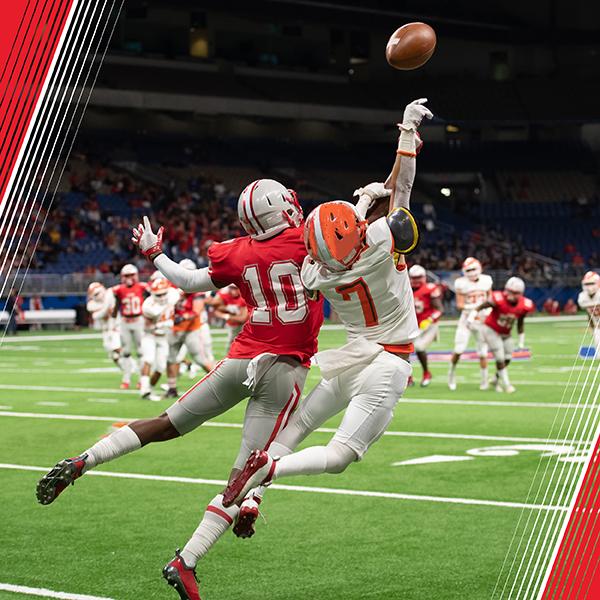
Preparing For the Fall Sports Season
Fall sports season is just around the corner! While it may be tempting to jump right in, there are steps athletes should take in order to avoid injury and take full advantage of the upcoming sports season. If you’re an athlete or the parent of a young athlete, we’re here to bring you some practical tips about safely gearing up for fall sports.
General Tips for the Fall Sports Season
We asked Jennifer, one of our sports medicine supervisors, to share her expertise when it comes to preparing for a new season. Above all else, she suggests proper conditioning.
“The best thing you can do is keep up your conditioning and stay in shape,” she said. “Many coaches have pre-season training plans, so check out your school’s website or talk to your coach to see if there’s a plan you should follow.”
For freshmen students who may be new to a sport, Jennifer suggests being able to sustain a solid pace for one to two miles. Athletes should also practice push-ups, sit-ups and other strengthening exercises for 20 or 30 minutes at a time to increase their physical strength.
She also shared the following advice:
- New athletes must pace themselves. Although new athletes may want to try to keep up with more experienced athletes, it’s important for them to remember to start slowly to prevent overtraining and injury.
- Don’t forget to stretch. Stretching both before and after a workout facilitates positive muscle health and can help to improve performance. Check out our recommendations for the best workout stretches to add to your routine.
- Be conscious of overtraining. There is a fine balance between training hard and overtraining. Soreness is one thing, but pain is another. Parents are most familiar with their child’s activity level and should monitor their athlete closely.
- Don’t try to do too much in a short period of time. If the sports season inches closer and athletes haven’t completed much training up to that point, they shouldn’t attempt to cram it all in. Trying to do a lot of training in a short period of time will often do more harm than good. Instead, ease your way into activity and take incremental steps when increasing exercise routines.
- Avoid exercising during the hottest part of the day. The hottest part of the day tends to be 11 a.m. to 2 p.m., so exercise before or after that time to avoid any heat-related issues. If you are doing double workouts, the 11 a.m. to 2 p.m. time frame is a great amount of time to rest in between workouts.
- Consider working with an athletic trainer. Athletic trainers work with athletes to develop personalized, sport-specific treatment in order to maximize their performance and reduce the risk of injury. ATI Sports Medicine athletic trainers and physical therapists have the expertise to work with athletes at all levels of skill and competition and develop customized training programs to help them achieve their goals.
Sport-Specific Tips
FOOTBALL
As an athlete or parent of an athlete who plays football, concussions may be top of mind when it comes to sports-related injuries. In order to prevent concussions, it is important to understand the potential risk factors and prevention guidelines.
One major factor linked to concussions in athletes is previous injury. For example, if an athlete sprains their ankle and continues to play, they may struggle with balance and collide with another player or the ground.
Athletes that sustain an injury or concussion should tell their team physician, athletic trainer or physical therapist. These sports medicine providers can make sure the athlete has proper mobility and strength to protect themselves as they return to the field of play. If the athlete cannot properly run, cut and avoid contact, their athletic trainer or physical therapist can provide exercises and guidance to help them regain full health and safely play.
CROSS COUNTRY
This fall, take the proper precautions to stay on the race course and off the course to injury. Before the season begins, it’s important to build a base by running frequently and increasing the length of each run with time. Verywell Fit recommends starting by running 2-4 miles at a conversational pace a few times a week. Runners can also work with their coach or an athletic trainer to build a plan that best suits their talents and goals. During training or on the day of a meet, runners should be sure to drink plenty of water, warm up with dynamic stretching and wear supportive footwear.
VOLLEYBALL
To prepare for a season on the court, volleyball players should engage in strength training techniques for key areas such as the lower back, arms, shoulders, legs and core. While training, we also recommend that athletes protect their bodies by using external ankle support and minimizing the amount of jump training on hard surfaces. Finally, always be sure to warm up muscles with stretching prior to activity. Cold muscles do not absorb shock as well and are more susceptible to injury.
PREP FOR THE SEASON WITH ATI PHYSICAL THERAPY
Whether you’re an athlete hoping to perform at your best this season or a parent who wants to help their child avoid injury, ATI Sports Medicine is here for you. As certified healthcare professionals, our athletic trainers are experts at preparing athletes for success — all while ensuring they’re protected.
Schedule a free consultation with our team today to learn more about how we can support athletes during this upcoming season.